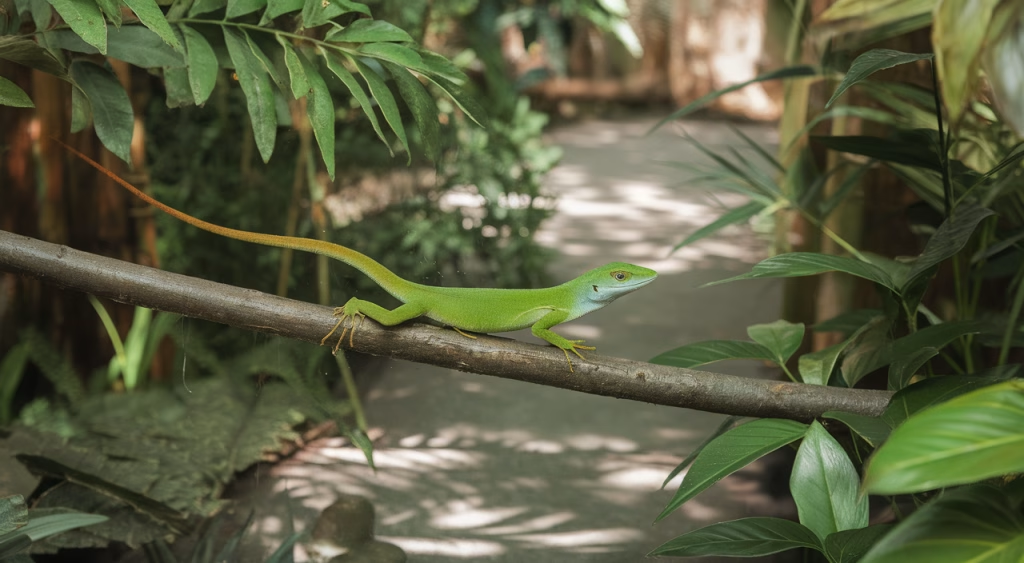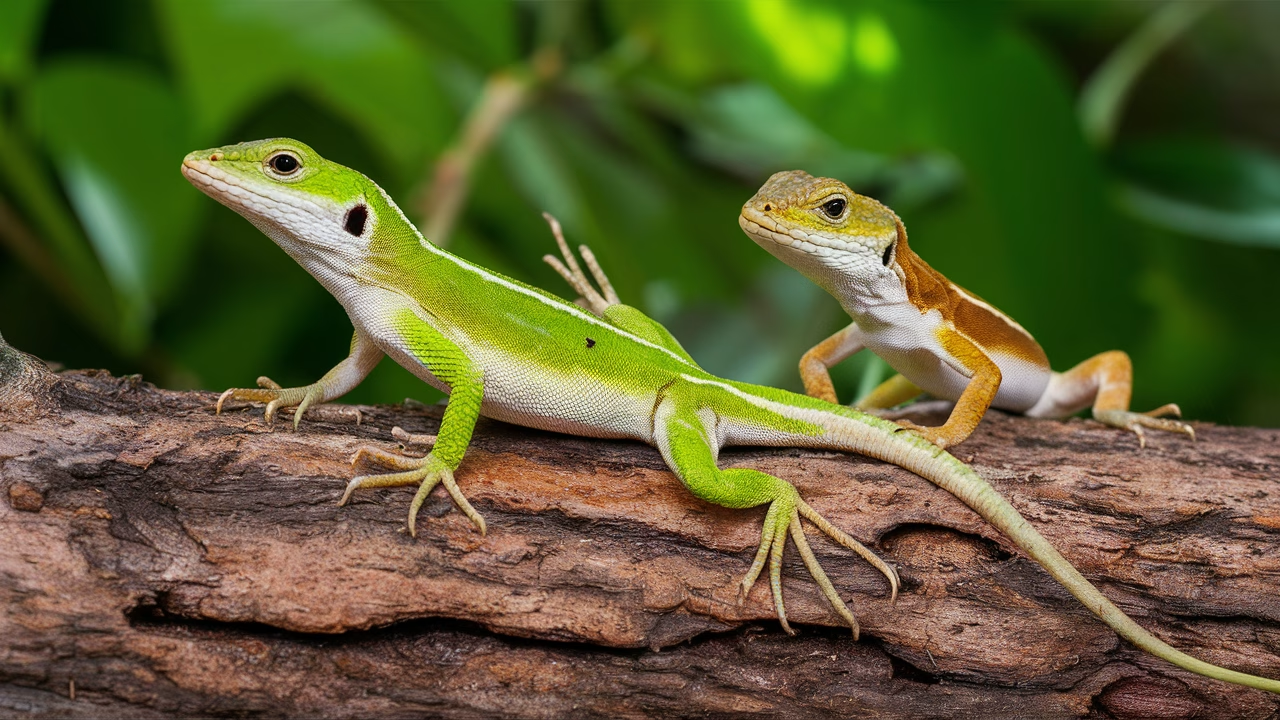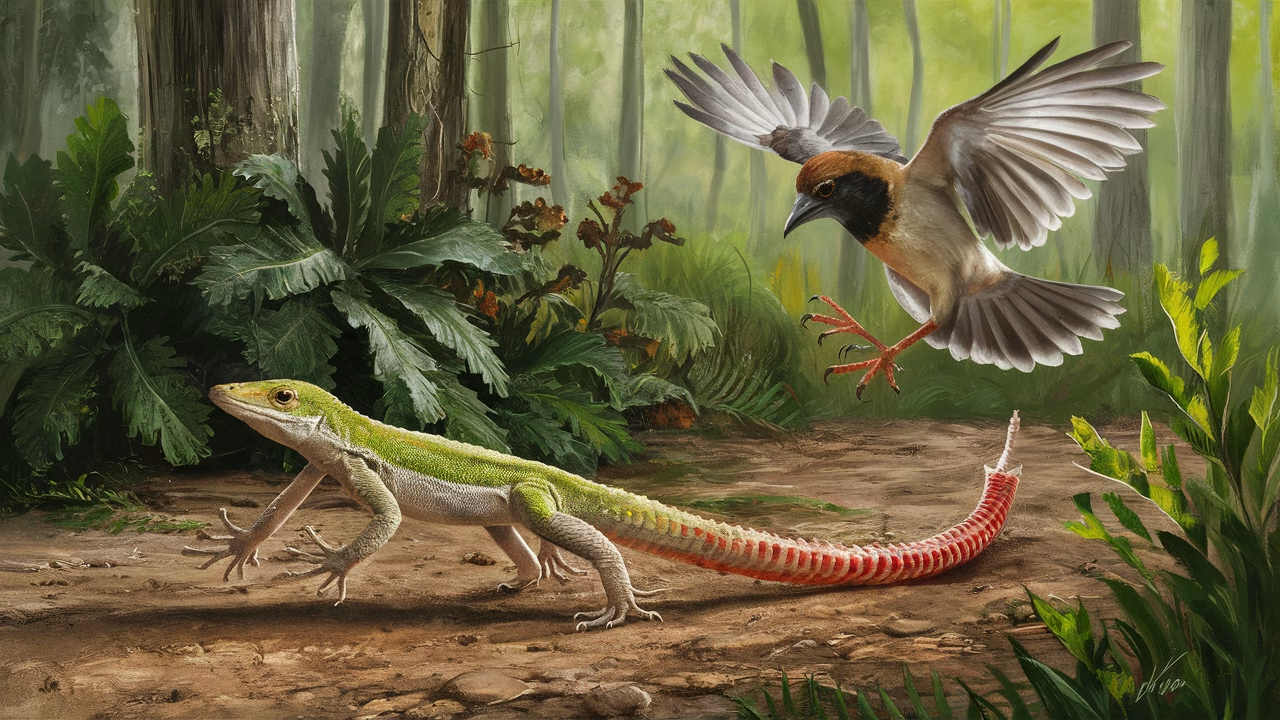Why Do Anole Lizards Detach Their Tails?
Short answer: Anole lizards detach their tails as an escape mechanism to distract predators. When threatened, these lizards can voluntarily release their tails, which continue to wiggle and twitch, buying the lizard valuable seconds to flee. This process, called tail autotomy, is a remarkable survival adaptation that highlights the ingenuity of evolution.
TL;DR: Why Anole Lizards Voluntarily Lose Their Tails
- Survival Instinct: Anole lizards detach their tails to escape predators in close encounters.
- Predator Distraction: The detached tail continues to wiggle, diverting the predator’s attention.
- Tail Autotomy: A biological process allowing controlled tail detachment at specific fracture planes in the vertebrae.
- Regeneration: Most anoles can regrow their tails, though the new tails differ slightly in structure and function.
- Species Variation: Not all anoles are equally skilled at tail autotomy; some rely on it more than others based on habitat and predator pressure.
Evolution of Tail Loss in Anole Lizards
There’s something marvelously cinematic about watching a small green lizard break free from its own body to escape danger. But this isn’t a horror movie—it’s evolutionary brilliance in action. Tail loss in anole lizards, also known as ‘caudal autotomy,’ is a line of defense that’s been refined over countless generations. This adaptation offers insight into the evolutionary pressures these reptiles have faced and how they’ve adapted for survival in predator-rich environments.
While tail autotomy exists in many lizard species, anole lizards—commonly known as Anolis—employ this survival strategy uniquely. These reptiles, most often found in the Americas, particularly the Caribbean and Southeastern U.S., have developed evolved fracture planes in their tail vertebrae, making detachment precise and efficient. It’s not just random—it’s calculated.
Types of Anole Lizards That Exhibit Tail Detachment
There are over 400 species of anole lizards, and while most are capable of tail autotomy, certain species are more prone to this defensive tactic than others. Here’s a comparison of common tail-shedding anole species:
| Species | Habitat | Tail Autotomy Frequency |
|---|---|---|
| Green Anole (Anolis carolinensis) | United States, arboreal regions | High |
| Bark Anole (Anolis distichus) | Bahamas, tree trunks | Moderate |
| Brown Anole (Anolis sagrei) | Florida, ground-dwelling | Very High |
Brown anoles, for instance, are known for being particularly eager to drop their tails—partially because they live in environments where ground-based threats are frequent. Contrast that to species like the knight anole, which relies more on size and climbing prowess to avoid danger. Clearly, this lizard behavior varies based on ecological niche and natural selection pressures.
Mechanism of Tail Detachment and Regeneration
So how does a lizard just snap off a part of its body and survive? The science here is as fascinating as the action itself. Tail autotomy is made possible by anatomical adaptations developed during evolution. Inside the tail vertebrae are specialized zones called fracture planes. When anole lizards sense extreme danger—such as a predator’s jaws—they can contract specific muscles that cleanly sever the tail at one of these planes, minimizing damage and bleeding.
That seems dramatic enough, but what’s truly astounding is the tail’s activity after detachment. The tail doesn’t just fall limp; it continues to thrash and writhe for up to several minutes. These erratic movements create vivid visual and kinetic stimuli that predators often can’t ignore. In a literal sense, the predator chases the tail while the anole lizard scampers free. This predator distraction strategy is remarkably effective.
Even better—the story doesn’t end with permanent loss. Most anole lizards possess impressive tail regeneration abilities. New scientific studies reveal that within weeks, a new cartilaginous (not bony) tail starts growing. It’s not a perfect replica—no bones, simplified muscle structure, and slightly different coloration—but it serves its purpose for survival.
Predator Distraction Strategy: How Anole Lizards Escape
Let’s imagine you’re a brown anole basking on warm garden mulch. Suddenly, a hungry bird swoops in. Your choices? Fight, freeze, or flee. And if you’re caught mid-flee, your final trick is the great escape—the tail drop that could save your life.
Tail detachment doesn’t just offer freedom; it creates powerful psychological misdirection. Predators instinctively follow movement. A wriggling tail mimics life and vitality. The predator assumes it still has the lizard in its grasp and devotes precious seconds to this decoy. Meanwhile, the anole lizard takes off toward a crevice, bush, or tree, every beat of motion increasing its chance of survival.
Interestingly, multiple studies have found that this escape strategy is especially effective against avian and mammalian predators. Natural observation has shown that birds often peck at or fly away with the tail, losing interest in tracking the actual lizard. Snakes, on the other hand, can sometimes be more persistent hunters. This makes tail loss particularly useful for anole lizards in open-terrain and high-visibility environments.
Recovery and Regrowth: What Happens After Tail Loss?
You might be wondering—what’s the cost of losing a tail? It’s not all upsides for anole lizards. Tails play a crucial role in balance, communication, and fat storage. Post-autotomy, a lizard’s mobility and energy reserves are compromised. They become more vulnerable to predators for weeks, possibly months during the tail regeneration process.
From an evolutionary perspective, though, surviving a predator encounter outweighs the temporary loss of agility. The regrowth process, driven by stem cells and fibroblasts, usually initiates within 3-5 days. Full tail regeneration can take several weeks, and although the new tail lacks bone structure, it allows anole lizards to regain basic functionality.
| Timeline | Regeneration Process |
|---|---|
| Week 1 | Wound healing, inflammation reduction |
| Weeks 2–4 | Cartilage formation, growth of soft tissue |
| Week 5–8 | Tail elongation, pigment adjustment |
Final Thoughts: Nature’s Tactical Genius in a Tail
Tail loss in anole lizards isn’t an accident—it’s a masterpiece of evolutionary engineering. Part survival tactic, part biological wonder, tail autotomy offers us a rare glimpse into how animals adapt to predation pressure. These tiny reptiles have weaponized their own bodies into deception-based shields, showcasing remarkable lizard behavior that continues to fascinate researchers.
For those of us watching from the sidelines as backyard observers, biology enthusiasts, or researchers, witnessing this marvel firsthand is more than educational—it’s awe-inspiring. The next time you see an anole lizard in your garden, you’ll appreciate the incredible survival strategy hidden within that seemingly simple tail.
Frequently Asked Questions
- Do some lizards detach their tails to escape predators?
Yes, many lizards—including anoles—automatically shed their tails to avoid predators. This process, called tail autotomy, helps them escape while the detached tail distracts the attacker. - How long does it take for a lizard to regrow its tail?
Typically, it takes 6 to 8 weeks for most anole species to fully regenerate a functional tail. - Does tail loss hurt the lizard?
Tail loss can be stressful, but the process is biologically adapted to minimize pain and blood loss due to specialized fracture zones. - Why do tails keep moving after detachment?
Muscle contractions fueled by stored energy cause twitching, even after separation, which confuses predators. - Can a lizard drop its tail multiple times?
Yes, but with diminishing success. Repeated regrowth creates less specialized tails, reducing functionality. - Are all anole lizards capable of tail autotomy?
Most species are, though the frequency and efficiency vary depending on the species and environment. - What predators are fooled by this trick?
Birds, small mammals, and even some snakes are tricked by the movement of detached tails, giving the lizard time to flee.





